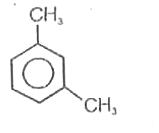What final product will form when alcoholic KOH is treated with 1, 1- dichloroethane?
Ethane-1, 2-diol
Ethene
Ethyne
Acetaldehyde
The correct Answer is:C
To determine the final product when alcoholic KOH is treated with 1,1-dichloroethane, we can follow these steps:
Step 1: Identify the structure of 1,1-dichloroethane
1,1-dichloroethane has the molecular formula C2H4Cl2. The structure can be represented as:
Cl|CH3−C−CH2|Cl
Here, the carbon atom bonded to both chlorine atoms is the alpha carbon, and the adjacent carbon is the beta carbon.
Step 2: Understand the reaction with alcoholic KOH
Alcoholic KOH is a strong base and promotes elimination reactions. In this case, it will facilitate a beta elimination reaction, where a hydrogen atom from the beta carbon and a chlorine atom from the alpha carbon are removed, resulting in the formation of a double bond.
Step 3: Perform the first elimination
From the structure, we can remove one Cl atom and one H atom:
- Remove one Cl from the alpha carbon (C with Cl)
- Remove one H from the beta carbon (C adjacent to the alpha carbon)
The reaction can be summarized as:
1,1−dichloroetha≠→CH2=CH2+HCl
This results in the formation of ethylene (CH2=CH2).
Step 4: Perform the second elimination
If we treat the product (ethylene) further with alcoholic KOH, we can perform another elimination reaction. This time, we will remove another hydrogen atom from the beta carbon and a chlorine atom from the alpha carbon (if we consider that we can form a terminal alkyne):
CH2=CH2→C≡C+HCl
This results in the formation of ethyne (C≡C).
Final Product
The final product after treating 1,1-dichloroethane with alcoholic KOH is ethyne (C2H2).
Summary
The final product formed when alcoholic KOH is treated with 1,1-dichloroethane is ethyne (C2H2).
---
1,1-dichloroethane has the molecular formula C2H4Cl2. The structure can be represented as:
Cl|CH3−C−CH2|Cl
Here, the carbon atom bonded to both chlorine atoms is the alpha carbon, and the adjacent carbon is the beta carbon.
Alcoholic KOH is a strong base and promotes elimination reactions. In this case, it will facilitate a beta elimination reaction, where a hydrogen atom from the beta carbon and a chlorine atom from the alpha carbon are removed, resulting in the formation of a double bond.
From the structure, we can remove one Cl atom and one H atom:
- Remove one Cl from the alpha carbon (C with Cl)
- Remove one H from the beta carbon (C adjacent to the alpha carbon)
1,1−dichloroetha≠→CH2=CH2+HCl
This results in the formation of ethylene (CH2=CH2).
If we treat the product (ethylene) further with alcoholic KOH, we can perform another elimination reaction. This time, we will remove another hydrogen atom from the beta carbon and a chlorine atom from the alpha carbon (if we consider that we can form a terminal alkyne):
CH2=CH2→C≡C+HCl
This results in the formation of ethyne (C≡C).
The final product after treating 1,1-dichloroethane with alcoholic KOH is ethyne (C2H2).
The final product formed when alcoholic KOH is treated with 1,1-dichloroethane is ethyne (C2H2).
Similar Questions
What final product will form when alcoholic KOH is treated with 1,1- dirbomoethane ?
View SolutionSalicylic acid is produced when phenol in alcoholic KOH is treated with
View SolutionConversion of Acetylene into 1, 1-dichloroethane
View SolutionThe final product formed , when alkaline Kl solution reacts with ozone and water is
View SolutionThe final product formed when acetaldehyde is reduced with sodium and alcohol is
View SolutionThe final product formed when methylamine is treated with NaNO2 and HCl followed by hydrolysis is :
View SolutionWhich of the following is the product formed when phenol is treated with dilute nitric acid ?
View SolutionThe final product of the oxidation of ethyl alcohol is
View SolutionWhat products are formed when the following compound is treated with Br2 in the presence of FeBr3

View SolutionWhat will be the product when benzaldehyde is treated with NaOD in D2O ?
View Solution
